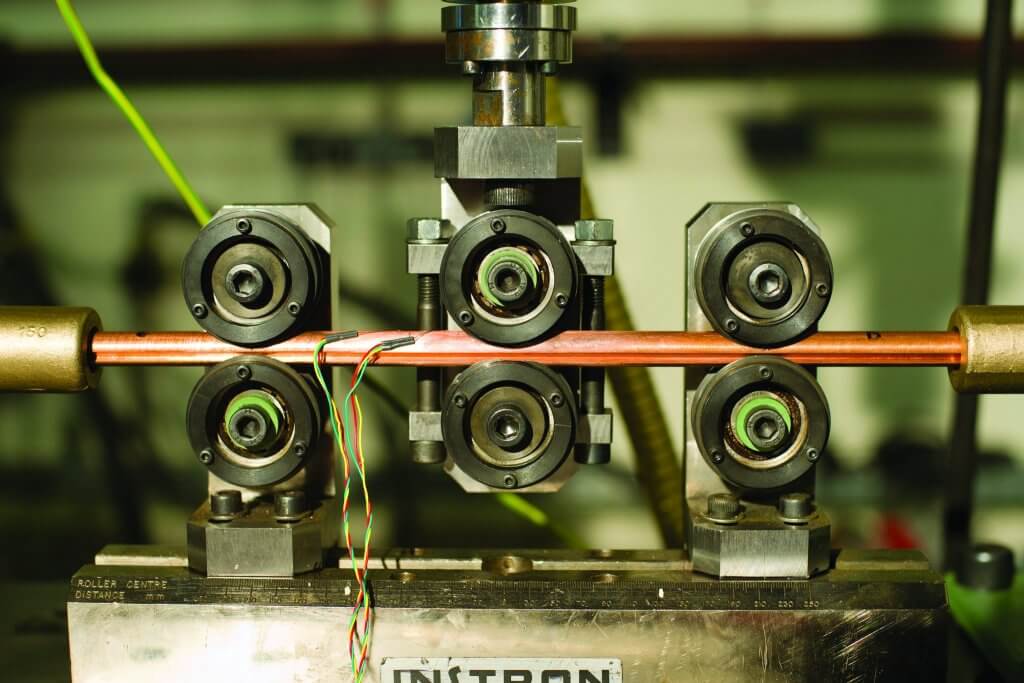Fatigue Behaviour Characterization
Perform sizing of new parts and characterize fatigue behaviour of mechanical parts and materials and establish potential.
Tests objectives
- Assess fatigue behaviour of:
– Small equipment (bearing cages, shock absorbers, brake beams, suspension parts, etc.)
– Bolted, welded and riveted assemblies - Determine the laws of crack formation
- Determine the critical plane stress intensity factor (K1C)
- Assess the fatigue limits of metal and composite materials and establish Wöhler curves and endurance diagrams for materials and assemblies
Tests facilities
- 6 servo-hydraulic machines for tension and compression testing (from ± 15 kN to ± 160 kN)
- 1 servo-hydraulic machine for torsion (± 5,000 N.m)
- 3 bending machines (± 50 kN)
- Force and displacement sensors on each cylinder
- Parallel measurements for multiple monitoring: Extensometry, displacement, temperature
- Non-destructive test instruments
Testing norms
EN 13261+A1 – Wheelsets and bogies – Axles – Product requirements
NF A03-400 – Iron and steel – Fatigue testing – General principles
NF A03-405 – Metal products – Fatigue testing – Statistical data processing

I should like to be contacted.
Please complete the contact form. One of our engineers will be in touch with you as soon as possible.
Go to formOur references
ALSTOM
BEA-TT (French Land Transport Accident Investigation Bureau)
SNCF




